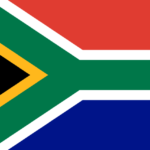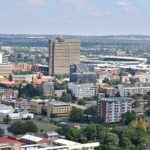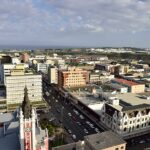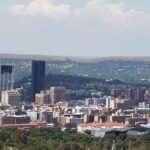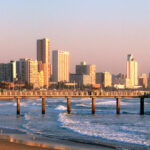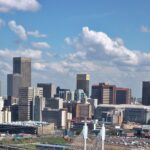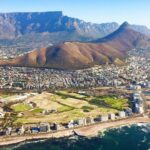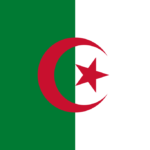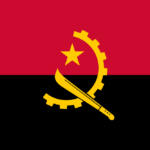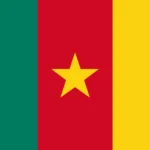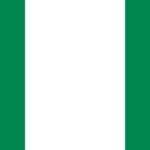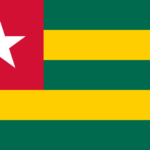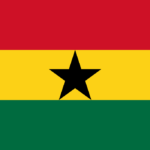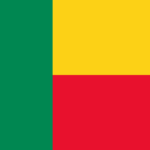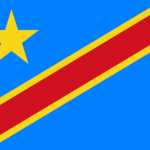South Africa

South Africa, located on the southern tip of the African continent, is a country renowned for its varied topography, great natural beauty, and cultural diversity. Since the legal ending of apartheid in 1994, South Africa has emerged as a favored destination for travelers seeking both adventure and cultural immersion. With a rich history and a vibrant present, South Africa offers a unique blend of landscapes, languages, and traditions that captivate visitors from around the world.
Apartheid: A Dark Chapter in History
For over 40 years, South Africa was ruled by a white minority government that enforced a policy of apartheid, which institutionalized racial segregation. The government, controlled by the minority white population, enforced segregation between government-defined races in housing, education, and all aspects of daily life. This system created three distinct nations within South Africa: one of whites, one of blacks, and one of “Coloureds” and ethnic Asians. Apartheid was vehemently opposed by the international community, leading to economic and cultural boycotts that isolated South Africa on the global stage.
The Road to Democracy and Reconciliation
In the late 1980s, the South African government began to repeal apartheid laws, signaling a transition towards universal suffrage and democracy. This process culminated in the historic 1994 elections, where a government led by the Black majority, under the leadership of Nelson Mandela, came into power. Mandela, a symbol of resilience and forgiveness, played a pivotal role in dismantling apartheid and promoting reconciliation among the diverse population of South Africa.
A Melting Pot of Cultures and Languages
One of the defining characteristics of South Africa is its diverse cultural landscape. The country is home to a rainbow of ethnicities, languages, and traditions. South Africa has eleven official languages, including Zulu, Xhosa, Afrikaans, English, and more. This linguistic richness reflects the multicultural fabric of the nation, where people from different backgrounds coexist and contribute to the vibrant tapestry of South African society.
Economy and Infrastructure
South Africa, a country known for its diverse culture and natural beauty, also plays a crucial role in the African economy. With a rich history and a vibrant present, South Africa’s economy and transportation network are integral components of its growth and development. In this article, we’ll delve into the various facets of South Africa’s economy and its transportation system, exploring how they interconnect to shape the nation’s progress.
A Glimpse into South Africa’s Economy
South Africa boasts the continent’s second-largest economy, driven by a mix of industries that span mining, agriculture, manufacturing, and services. This economic diversity provides the country with a degree of resilience, even in the face of global economic fluctuations. The mining sector, especially the extraction of minerals like gold, platinum, and diamonds, has been a historical backbone of the economy.
Key Economic Sectors
Manufacturing
The manufacturing sector has undergone significant growth, producing automobiles, textiles, chemicals, and more. The automotive industry, in particular, has gained prominence with major global manufacturers setting up operations within the country.
Agriculture
Agriculture plays a vital role in providing food security and employment. South Africa’s diverse climate supports the cultivation of crops ranging from grains to citrus fruits and wine grapes.
Services
The services sector encompasses finance, telecommunications, tourism, and more. Johannesburg, the largest city, serves as the financial hub of the country, while Cape Town attracts tourists with its stunning landscapes.
Transportation Network
South Africa’s transportation network is a critical enabler of economic activities, ensuring the smooth flow of goods and people across the country.
Roads and Highways
A well-developed road infrastructure connects major cities and towns. The N1 and N2 highways, for instance, facilitate the movement of goods between Cape Town and Johannesburg.
Railways
The railway system in South Africa is extensive, connecting mining regions to ports for export. The Transnet Freight Rail company manages the majority of the country’s rail infrastructure.
Ports and Shipping
The country’s major ports, including Durban and Cape Town, handle imports and exports, contributing significantly to international trade.
Challenges and Opportunities
Inequality and Unemployment
Despite its economic growth, South Africa faces challenges related to income inequality and unemployment. Efforts to address these issues are ongoing through various social and economic programs.
Infrastructure Development
Investments in infrastructure development remain a priority to enhance transportation and support economic growth. Projects such as the Gautrain rapid rail network have shown the government’s commitment to improving connectivity.
The Way Forward
South Africa’s economy and transportation system are intricately linked, with the latter serving as a catalyst for economic development. As the nation navigates its path toward inclusive growth, continued investment in both sectors will be pivotal.
Government
South Africa operates as a unique parliamentary republic, where the president holds both head of state and head of government roles, reliant on Parliament’s confidence for their tenure. The Constitution holds supremacy over the executive, legislature, and judiciary, with superior courts empowered to invalidate unconstitutional actions. The National Assembly, with 400 members, uses party-list proportional representation for five-yearly elections. The upper house, National Council of Provinces, has ninety members chosen by provincial legislatures.
Following each parliamentary election, the National Assembly elects a president who serves the same term as the Assembly (typically five years). A president can only serve two terms. Cabinet members, including a deputy president, are appointed by the president. The president and cabinet can be removed by a no-confidence motion. In recent elections, the ANC secured 58% of the vote, the Democratic Alliance gained 21%, and the Economic Freedom Fighters received 11%. The ANC has governed South Africa since the end of apartheid.
The nation lacks a defined capital. Parliament is in Cape Town, the president’s office is in Pretoria, and Bloemfontein serves as a judicial center. South Africa has been active in mediation for African conflicts. It joined BRICS in 2011 and has a well-developed defence industry. The country voluntarily renounced nuclear weapons and signed the Nuclear Non-Proliferation Treaty. Law enforcement is handled by the South African Police Service (SAPS), complemented by a large private security industry.
Despite progress, South Africa grapples with high crime rates, including murders and rapes. Xenophobic attacks and instances of political repression have raised concerns. The country is divided into nine provinces, each governed by a legislature and a premier. Provinces are subdivided into districts and municipalities, with metropolitan municipalities serving as both district and local governments for urban areas.
Arts & Culture of South Africa
South Africa is a country renowned for its rich and diverse arts and culture scene. From ancient civilizations to contemporary expressions, the country’s artistic heritage is a vibrant tapestry that reflects its history, traditions, and the creative spirit of its people. In this article, we will explore the museums, visual arts, festivals, and theater that contribute to the colorful cultural landscape of South Africa.
Museums: Preserving the Past, Celebrating Heritage
Ditsong National Museum of Natural History
Located in the capital city of Pretoria, the Ditsong National Museum of Natural History is a treasure trove of Pliocene and Pleistocene human fossils. This museum showcases the fascinating journey of human evolution in South Africa, offering visitors a glimpse into our ancient past.
University of Pretoria Museums
The University of Pretoria Museums houses a vast collection of art and ceramics from southern Africa, including the iconic Mapungubwe Collection. This collection represents the artistic achievements of the medieval Ashanti Empire and the Mapungubwe Kingdom, showcasing the craftsmanship and cultural heritage of the region.
Zeitz Museum of Contemporary Art Africa
Situated at the Victoria & Alfred Waterfront in Cape Town, the Zeitz MOCAA is the largest museum of contemporary African art in the world. This architectural marvel is a testament to South Africa’s thriving contemporary art scene, featuring diverse and thought-provoking exhibitions that push boundaries and challenge conventions.
District Six Museum
The District Six Museum in Cape Town serves as a poignant reminder of the injustices and forced removals that occurred during the Apartheid era. It pays tribute to the 60,000 residents of District Six who were forcibly displaced based on their race, preserving their stories and fostering a sense of healing and reconciliation.
Visual Arts: A Kaleidoscope of Creativity
South Africa’s visual arts scene is a dynamic and thriving space that showcases the diversity of artistic expressions. From traditional forms to contemporary masterpieces, the visual arts of South Africa capture the essence of the country’s cultural identity.
Johannesburg Art Gallery
As the major public gallery in Johannesburg, the Johannesburg Art Gallery exhibits a wide range of art collections, including works from the South African and African art scene of the 21st century. It provides a platform for both established and emerging artists, fostering creativity and dialogue within the artistic community.
Gallery Momo
Gallery MOMO is a prominent contemporary art gallery with exhibition spaces in Johannesburg and Cape Town. Representing South African and international artists, this gallery is at the forefront of showcasing innovative and thought-provoking artworks that reflect the ever-evolving art scene in South Africa.
Tatham Art Gallery
Located in a historic building, the Tatham Art Gallery is a well-established art museum that hosts both permanent and temporary exhibitions. With a focus on promoting local talent and engaging with the community, this gallery plays a vital role in nurturing the arts in South Africa.
Goodman Gallery
The Goodman Gallery is an internationally recognized contemporary art gallery with locations in Johannesburg, Cape Town, and London. It represents a diverse roster of artists who tackle social, political, and cultural issues through their artworks, challenging viewers to question and reflect on the world around them.
Festivals: Celebrating Diversity and Creativity
South Africa’s vibrant festival scene is a testament to the country’s rich cultural heritage and its commitment to celebrating diversity. These festivals provide an opportunity for artists, performers, and communities to come together and showcase their talents, creating a vibrant tapestry of entertainment and cultural exchange.
AfrikaBurn
Inspired by the renowned Burning Man event, AfrikaBurn is an official regional gathering held in the Tankwa Karoo in South Africa’s Northern Cape province. This immersive experience brings together art, music, performance, and community participation, creating a temporary city of creativity and self-expression.
Cape Town Carnival
The Cape Town Carnival is a spectacular multicultural event held annually in March. The vibrant street parade showcases the diverse cultures and traditions of the city and South Africa as a whole. Colorful floats, electrifying music, and mesmerizing performances transform the streets into a celebration of unity and artistic expression.
Cape Town Pride
Cape Town Pride is an annual event that celebrates the LGBTQ+ community and promotes inclusivity and acceptance. The highlight of the event is the pride parade, where participants proudly display their identities and advocate for equality and human rights.
Cape Town International Jazz Festival
The Cape Town International Jazz Festival is a world-class music event that attracts jazz enthusiasts from around the globe. Originally founded as the North Sea Jazz Cape Town, this festival has grown into a prestigious platform for showcasing both local and international jazz talents, creating an unforgettable experience for music lovers.
Johannesburg International Mozart Festival
Launched in 2006 to commemorate the 250th anniversary of Wolfgang Amadeus Mozart’s birth, the Johannesburg International Mozart Festival has become a highly anticipated classical music event. Renowned musicians and orchestras come together to perform Mozart’s compositions, enchanting audiences with the timeless beauty of his music.
National Arts Festival
Formerly known as the Grahamstown Festival, the National Arts Festival is the largest performing arts festival in Africa. Held annually in Makhanda (formerly Grahamstown), this festival celebrates various forms of artistic expression, including theater, dance, music, and visual arts, attracting both local and international performers and visitors.
Theater: Showcasing the Power of Performance
The theater scene in South Africa is a vibrant platform for storytelling and cultural expression. From thought-provoking dramas to captivating musicals, South African theaters provide a stage for creativity and reflection.
Artscape Theatre Centre
Situated in Cape Town, the Artscape Theatre Centre is a premier performing arts center that hosts a diverse range of productions. From ballet and opera to theater and musical performances, this venue showcases the immense talent and creativity within South Africa’s performing arts community.
Market Theatre
The Market Theatre, located in the bohemian suburb of Newtown in Johannesburg, has a rich history of promoting innovative and socially relevant theater. During the apartheid era, it served as an independent and anti-racist theater, providing a platform for marginalized voices. Today, it continues to push boundaries and challenge societal norms through its thought-provoking productions.
The South African State Theatre
The South African State Theatre, situated in the heart of Tshwane (Pretoria), is one of the largest theaters in Africa. With its state-of-the-art facilities and diverse program offerings, this theater is a hub for both local and international productions, showcasing the best of South African and global talent.
Breathtaking Landscapes and Natural Wonders
South Africa’s topography is as diverse as its people. From the dramatic coastline along the Indian and Atlantic Oceans to the rugged mountains of the Drakensberg Range, the country offers a visual feast for nature enthusiasts. The iconic Table Mountain in Cape Town, the vast savannas of Kruger National Park, and the picturesque vineyards of the Cape Winelands are just a few examples of the breathtaking landscapes that South Africa has to offer.
Economic Challenges and Progress
Despite its natural beauty and cultural richness, South Africa faces significant economic challenges. The country’s transition from apartheid to democracy brought about social and political changes, but economic disparities persist. High unemployment rates, crime, and income inequality are among the pressing issues that South Africa grapples with. However, the country has made remarkable progress in establishing social equity and economic stability in a relatively short period of time.
Rich in Natural Resources
South Africa is blessed with abundant natural resources, which have played a vital role in shaping its economy. The country is the largest producer and exporter of gold in the world, and its mineral wealth extends beyond just gold. South Africa is also a net exporter of agricultural products, with crops such as citrus fruits, corn, wheat, and wine contributing to its agricultural sector. Additionally, the country has a highly developed manufacturing industry and is a world leader in the production of synthetic fuels and mining equipment.
Struggles with HIV/AIDS
South Africa has faced significant challenges in combating the HIV/AIDS epidemic. At one point, the country had one of the highest infection rates in the world, resulting in a drastic decline in life expectancy. However, through awareness campaigns and the availability of anti-retroviral drugs, South Africa has made progress in stabilizing the number of new cases and improving the quality of life for those living with HIV/AIDS. The fight against the disease continues, but South Africa’s efforts serve as a model for other nations grappling with similar challenges.
Migration and Cultural Exchange
Migration has played a significant role in shaping South Africa’s demographics and cultural diversity. Historically, migrants from various regions, including Southeast Asia and Africa, were brought to the country as slaves or indentured laborers. In the 20th century, temporary African migrants became the dominant source of labor in the mining industry, while selective immigration policies restricted the entry of non-white immigrants. Today, South Africa continues to be a destination for migrants from neighboring countries, contributing to the cultural exchange and economic growth of the nation.
Challenges and Opportunities
While South Africa has made great strides since the end of apartheid, it still faces numerous challenges. High unemployment rates, social inequality, and crime remain pressing issues that require attention. However, the country also possesses immense potential for growth and development. With its rich natural resources, diverse cultural heritage, and resilient population, South Africa is poised to overcome these challenges and create a brighter future for its people.
Embracing the Spirit of Ubuntu
In South Africa, the concept of Ubuntu permeates society. Ubuntu, often translated as “humanity towards others,” emphasizes the interconnectedness and interdependence of individuals. This philosophy promotes kindness, compassion, and a sense of community. It is this spirit of Ubuntu that has allowed South Africa to transcend its troubled past and strive towards a more inclusive and united future.
South Africa is a land of contrasts, where the scars of apartheid are still healing, but the spirit of resilience and hope shines bright. With its diverse cultures, stunning landscapes, and rich history, South Africa invites visitors to explore its beauty, learn from its past, and embrace the spirit of Ubuntu. As the country continues to navigate its path towards progress and inclusivity, it stands as a testament to the power of resilience and the triumph of unity over division.
Additional Information:
- South Africa’s national animal is the Springbok.
- The country is famous for its wildlife, including the Big Five: lion, leopard, elephant, rhinoceros, and buffalo.
- South Africa hosted the FIFA World Cup in 2010, becoming the first African nation to do so.
- The iconic Robben Island, where Nelson Mandela was imprisoned, is now a UNESCO World Heritage Site.
- South Africa is known for its vibrant music and dance, with genres such as Kwaito and Gqom gaining international recognition.
- The Cape Floral Kingdom, located in the Western Cape, is one of the world’s richest floral regions and a UNESCO World Heritage Site.
Geography
South Africa’s land area of 1,219,912 square kilometers makes it the 24th-largest country in the world. Its geography is characterized by an assortment of landscapes, each with its distinct climate, vegetation, and cultural significance. From towering mountains to arid deserts, the country’s diverse terrain has played a crucial role in shaping its history, ecology, and way of life.
The Plateau Landscape
The heart of South Africa features a vast plateau, nearly flat in many regions, with an elevation ranging from 1,000 to 2,100 meters above sea level. This plateau extends across much of the country, sloping gently towards the west, north, and south. It is encircled by the Great Escarpment, a dramatic geographical boundary that holds many secrets of the nation’s past.
The Great Escarpment and Drakensberg
The eastern stretch of the Great Escarpment is known as the Drakensberg. Mafadi, the highest peak in this range, stands at an impressive 3,450 meters. This natural barrier forms the border with Lesotho and provides breathtaking landscapes, including awe-inspiring cliffs, gorges, and waterfalls.
The Great Karoo and Bushmanland
Moving southwest from the plateau, we encounter the Great Karoo, a sparsely populated shrubland. This arid region gradually transitions into the more inhospitable Bushmanland and eventually becomes the expansive Kalahari Desert in the north-west.
The Highveld and Commercial Farmlands
The mid-eastern part of the plateau is known as the Highveld. With its favorable water supply, this area supports a significant portion of South Africa’s agricultural lands. Gauteng, the country’s largest conurbation, is nestled within this region.
The Bushveld and Limpopo River Lowlands
Heading north from the Highveld, we arrive at the Bushveld, a diverse biome with rich biodiversity. This area eventually gives way to the Lowveld, where the Limpopo River meanders through the landscape.
The Coastal Belt and Lowveld
The coastal belt lies below the Great Escarpment, encompassing regions like the Limpopo Lowveld and the Mpumalanga Lowveld. These areas are characterized by a hotter and drier climate compared to the Highveld.
Cape Fold Mountains and the Little Karoo
Along the southern coast, the Cape Fold Mountains run parallel to the ocean, separating the coastal plain from the interior. Between these ranges lies the Little Karoo, an area of semi-desert shrubland known for ostrich farming.
The Garden Route and Coastal Rainfall
The narrow coastal strip between the Outeniqua and Langeberg ranges boasts a unique climate with moderately high year-round rainfall. This region, known as the Garden Route, is famous for its extensive forests and stunning landscapes.
The Cape Peninsula and Mediterranean Climate
At the southwestern tip of the country lies the Cape Peninsula, bordered by the Atlantic Ocean. This Mediterranean climate region receives most of its rainfall during the winter months, setting it apart from the rest of Sub-Saharan Africa.
Swartland, Namaqualand, and Desert Regions
In the southwest corner, the Cape Peninsula gives way to the Swartland and Malmesbury Plain, a wheat-growing region. Moving northward, Namaqualand becomes progressively more arid, with the Orange River marking the border with Namibia.
Climate Variability and Change
South Africa’s climate is influenced by its oceanic surroundings and elevation variations. This results in diverse climatic zones, ranging from deserts to subtropical regions. However, the country faces challenges due to climate change, including increased temperatures, altered rainfall patterns, and extreme weather events.
Biodiversity and Ecotourism
South Africa’s biodiversity is astounding, with various ecosystems supporting a wide array of plant and animal species. The country ranks among the world’s megadiverse nations and has implemented strategies to conserve its unique natural heritage through ecotourism initiatives.
Unique Plant and Animal Species
The country is home to remarkable endemic species like the riverine rabbit and diverse succulent plants. The fynbos biome, found in the Cape Floristic Region, hosts an incredible variety of plant life, rivaling the Amazon rainforest in species richness.
Threats to Biodiversity
Despite its natural wealth, South Africa faces threats to its biodiversity. Invasion by alien species and habitat loss due to development pose significant challenges. Conservation efforts are vital to protect the country’s unique flora and fauna.
Education
Education forms the bedrock of any society, shaping the present and future of its citizens. South Africa, with its rich history and diverse population, has established a comprehensive three-tier education system that spans from primary school to tertiary studies. In this article, we will delve into the nuances of this system, its evolution, and its impact on the nation’s growth.
In 2007, South Africa boasted an adult literacy rate of 88.7%, underlining the significance of education in the nation’s development. The education system is structured into three tiers: primary school, high school, and tertiary education. With a formal schooling span of twelve years, South African learners embark on an educational journey that equips them for the challenges of the modern world.
Primary Education: Laying the Foundation
The education journey commences with grade R, a pre-primary foundation year aimed at preparing young learners for primary school. Primary schools encompass the first seven years of formal schooling, providing a solid grounding in essential subjects and life skills. During this phase, students acquire the fundamental knowledge that forms the basis for higher-level studies.
High School Journey: Navigating Secondary Education
The transition to high school marks a crucial step in a student’s educational path. South Africa’s high school education extends for five years, nurturing students’ intellectual growth and preparing them for future endeavors. The high school curriculum encompasses a diverse range of subjects, enabling students to explore their interests and aptitudes.
The Importance of the National Senior Certificate Examination
Culminating the high school experience is the National Senior Certificate examination, a pivotal assessment that opens the doors to tertiary studies. Successful completion of this examination is a prerequisite for admission to South African universities. The examination not only evaluates academic prowess but also shapes the trajectory of students’ careers.
Tertiary Education: Pathways to Higher Learning
South Africa’s tertiary education system offers diverse pathways for higher learning. Public universities are categorized into traditional universities, universities of technology, and comprehensive universities. Traditional universities provide theoretical education, universities of technology offer vocationally-oriented degrees, and comprehensive universities offer a blend of both.
Diverse Landscape of South African Universities
The country hosts 23 public universities, each contributing uniquely to South Africa’s academic landscape. With 11 traditional universities, 6 universities of technology, and 6 comprehensive universities, students have a plethora of options to pursue their academic passions and career aspirations.
Challenges and Reforms: Apartheid’s Legacy and Beyond
South Africa’s education system wasn’t immune to the dark era of apartheid. Schools for black individuals endured discrimination, with inadequate funding and a separate syllabus known as Bantu Education. This curriculum aimed to equip students with minimal skills, perpetuating a cycle of limited opportunities.
Transformation of Tertiary Education
In a bid to reform the tertiary education system, South Africa embarked on a series of mergers and renaming initiatives in 2004. This effort aimed to create larger institutions and ensure educational quality across the board. The renaming of all tertiary education institutions as “universities” aimed to elevate their status and global recognition.
Empowering Students: Financial Aid Scheme of 1999
Recognizing the importance of accessible education, South Africa implemented a financial aid scheme in 1999. By 2015, this scheme had aided 1.4 million higher education students, enabling them to pursue their academic dreams without being hindered by financial constraints.
National Anthem
Further reading
- Wikipedia –https://en.wikipedia.org/wiki/South_Africa
- Britannica – https://www.britannica.com/place/South-Africa
- The Word Fact Book – https://www.cia.gov/the-world-factbook/countries/south-africa/
Towns and Cities
Bloemfontein
Check Voyage info and Guide for South Africa Here Check the weather in South Africa Here Bloemfontein is the judicial capital of South Africa and is one of the country’s three national capitals, along with Pretoria and Cape Town. It serves as…
Johannesburg
Check Voyage info and Guide for South Africa Here Check the weather in South Africa Here Johannesburg, often shortened to Joburg or Jozi, is the largest city in South Africa and the provincial capital of Gauteng. Nicknamed “Egoli” or “City of Gold”…
